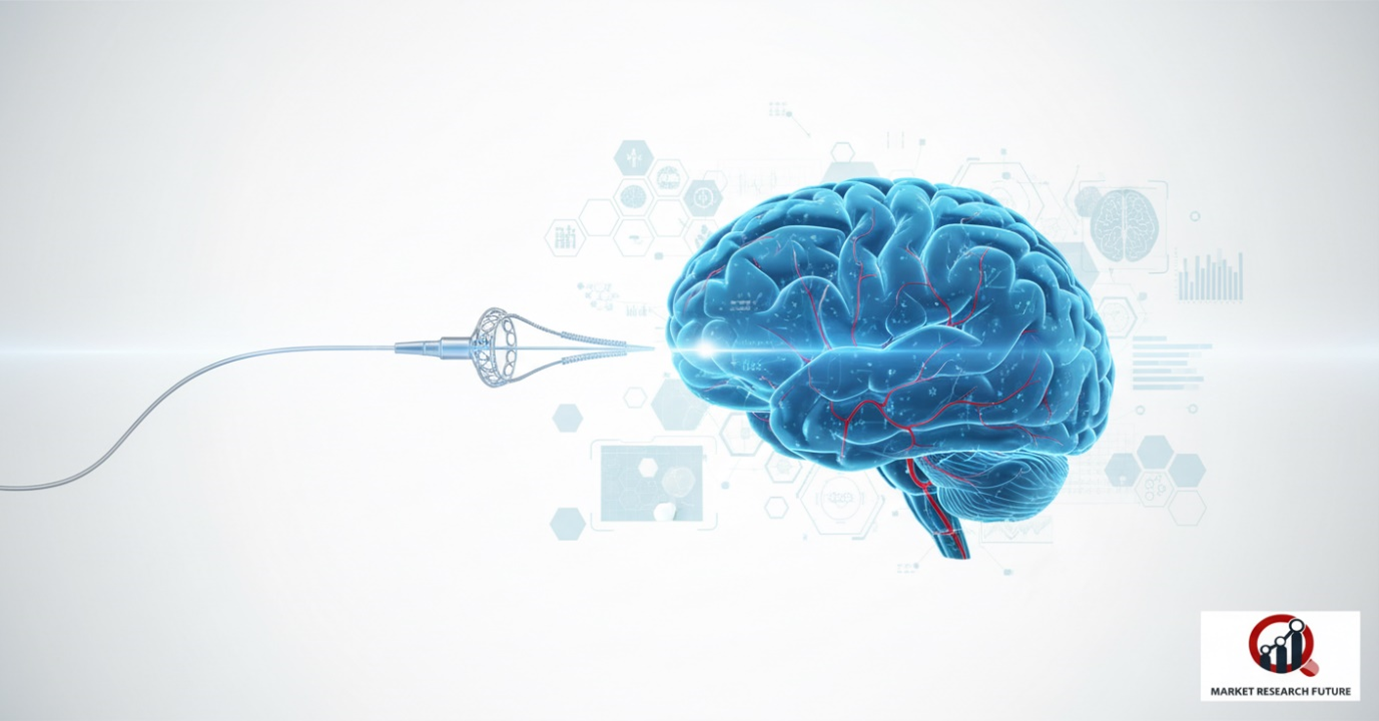Neurovascular Devices Market: The Rise of Smart, Minimally Invasive Brain Treatments

A New Era in Brain Health
For the first time in a decade, clinicians have new neurovascular devices to help diagnose and treat life-threatening issues around the brain and vascular system. For conditions such as aneurysms, strokes, and arteriovenous malformations (AVMs), these devices have made it possible to forego risky open brain surgeries and replace them with minimally invasive lifesaving procedures instead.
A new thirst for innovation in the neurovascular space has led to the creation of new devices such as thrombectomy systems and coils for aneurysms. In the neurovascular space, innovation has focused on expanding the limits of what can be achieved with vascular devices and procedures.
Minimally Invasive Techniques: Changing the Face of Neurovascular Care
Minimally invasive procedures have become the standard of care. In endovascular embolization (coiling), a technique used to treat aneurysms, has made it possible to treat previously inoperable aneurysms.
Neurosurgeons guide a catheter through the vascular system, starting from the groin and eventually reaching the blood vessels supplying the brain. When the catheter reaches the aneurysms, platinum coils and/or mesh stents are released to fill and seal the aneurysm. This new approach has tremendously enhanced the patient’s comfort. Elderly patients with multiple other conditions also benefit from the reduced trauma and quicker recovery time.
According to a study from Neurologia Medico-Chirurgica published in 2017, about 2.6% of people have unruptured cerebral aneurysms, and among people aged 80 and older, the number is up to 4.8%. By the minimally invasive neurovascular therapies, the provided treatment, hopefully, will lead to the patients with unruptured cerebral aneurysms.
Understanding the Disease Profile
A wide range of disorders across the neurovascular system, including ischemic and hemorrhagic strokes, two of the leading causes of death and disability worldwide, can be treated using neurovascular devices.
An ischemic stroke occurs when an artery supplying blood to the brain is blocked, thus leading to brain tissue death and paralysis. Advanced thrombectomy devices are able to facilitate the quick restoration of blood flow and brain tissue.
In the case of hemorrhagic strokes, the situation could lead to serious complications or death if a weak blood vessel bursts, causing excess blood to flow in and pressure to build up. While not as common, hemorrhagic strokes are responsible for 40% of stroke-related deaths.
Market Forces: What is Driving the Surge
The growing prevalence of diseases, positive reimbursement, and new stimulating technology are major forces that have led to the notable expansion of the Global neurovascular devices market.
Key growth factors include:
- Rising Burden of Neurovascular Disorders: Higher stroke rates and the discovery of more aneurysms via advanced imaging have increased market demand.
- Growing and More Elderly Population: Old age increases the risk of brain aneurysms and brain vascular abnormalities.
- Preference for Minimally Invasive Procedures: Shorter hospital stays and quicker recovery times with fewer complications encourage the use of minimally invasive procedures.
- Innovative Products & FDA Clearances: New bioabsorbable stents, catheter navigation systems with artificial intelligence, and robot-neuro-interventions are revolutionizing the surgical procedure.
- Positive Reimbursement Policies: More treatments are now allowed through government and private insurance.
Emerging Trends: What is New in Neurovascular Devices
The future of the Neurovascular Devices industry will prosper due to digital transformation and advanced precision medicine.
- AI and Robotics: AI imaging and robotic navigation are increasing accuracy and safety in procedures.
- 3D Models: 3D vascular models designed for individual patients are enhancing device design and surgical planning.
- Bioabsorbable and Drug-Eluting Devices: New designs lower the chances of complications and help the patient’s body heal.
- Integrating Tele-Neurology: Advanced Remote patient monitoring and AI platforms for post-stroke care are improving long-term care.
Challenges on the Horizon
- Unquestionably, there is strong growth, but the market has its challenges:
- Advanced Devices are Expensive and Difficult to Access for Low-income Regions.
- Lengthy Approval Processes and Rigorous Regulations.
- Emerging markets have Inadequate Interventional Neurologists.
Increased collaboration between the healthcare sector and the government is expected to lessen these challenges.
Conclusion: The Future of Neurovascular Care
The innovations of digital technologies with minimally invasive neurovascular approaches have transformed the practices of neurovascular medicine. The near future holds the promise of neo-vascularization with the added features of digital technologies poised to redefine the practices of neurovascular medicine. Governments and market leaders have high expectations, given the rapid advancements of AI and other digital technologies- newer innovations in neurovascular care will be more efficient, cost-effective, and patient-centered.